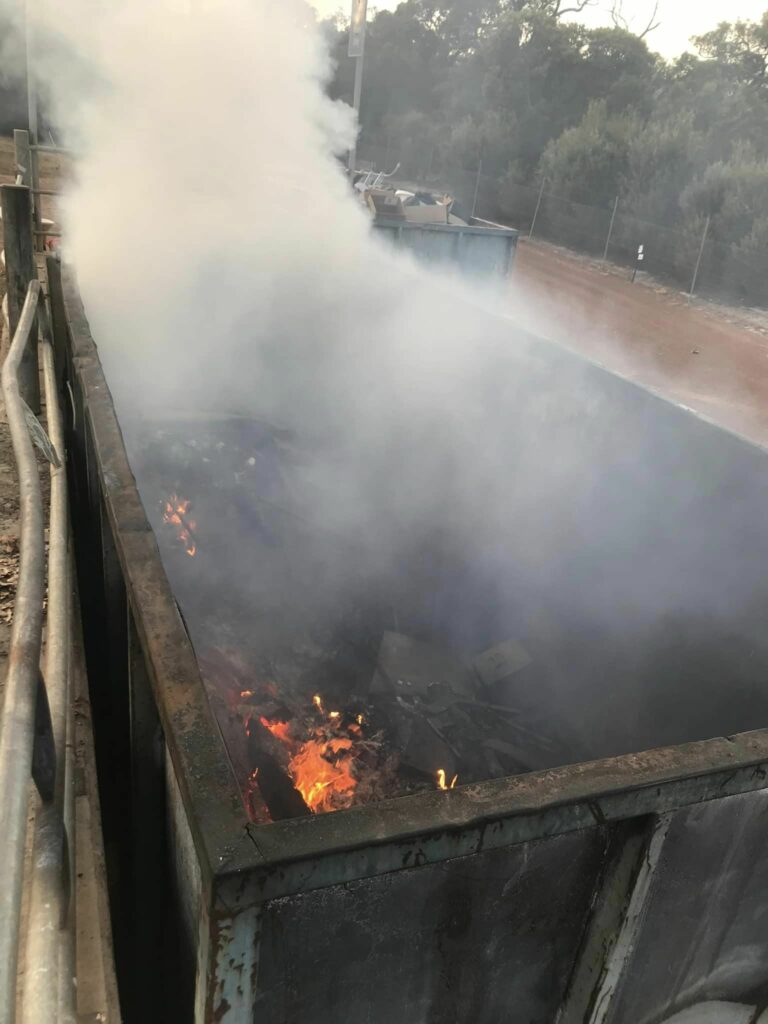While largely out of sight, embedded lithium-ion batteries are all around us. They power many of our everyday devices such as:
- baby monitors and cameras
- bluetooth devices (headphones, speakers, etc)
- computer accessories (wireless keyboards, mice, etc)
- digital cameras
- electric bikes and scooters
- smartwatches
- tablets
- toys
- videogame controllers.
The list goes on and on. Many Australians aren’t even aware of the existence of batteries in the products they use every day, and unknowingly dispose of these items in bins.

Pictured: In March 2023 Cleanaway operators servicing a customer’s site found a fire in one of our hook lift bins. The fire is suspected to be caused by an embedded lithium-ion battery.
Why are embedded lithium-ion batteries so dangerous?
The short answer: it doesn’t take much for lithium to combust.
There have been reports of lithium-ion batteries catching fire by simply coming into contact with moisture which makes them especially dangerous when placed in kerbside recycling bins.
On top of that, lithium fires even more dangerous than fires caused by other kinds of waste. Lithium releases oxygen as it heats up so using water to put out such fires is not only difficult but can lead to explosions.
Data provided by state fire departments show that more than 450 incidents linked to lithium-ion batteries have been reported over the past 18 months.
This alarming statistic is expected to rise as more and more lithium-ion batteries in use today reach the end of their life cycle.

Pictured: Embedded lithium-ion batteries such as the one inside this charred device shown above regularly catch fire in waste collection vehicles and facilities. This complicates an already difficult challenge for Australian waste management workers.
What to do with devices that contain embedded lithium-ion batteries?
Batteries of all types are a direct threat to our ecosystem and should be kept away from household waste bins or recycling bins.
Lithium-ion batteries pose an even greater hazard because they can combust at any stage of the waste management chain. These have been reported to catch fire during collection, transportation, handling and processing.
End of life devices that contain embedded lithium-ion batteries should be discarded at e-waste drop off points. This includes permanent collection sites at local waste transfer stations and retail outlets such as Bunnings.
Product stewardship programs such as MobileMuster accepts a large variety of e-waste such as mobile phones, smartwatches and tracking tags.
Contact us to learn more about how we’re making a sustainable future possible for communities and businesses across Australia.